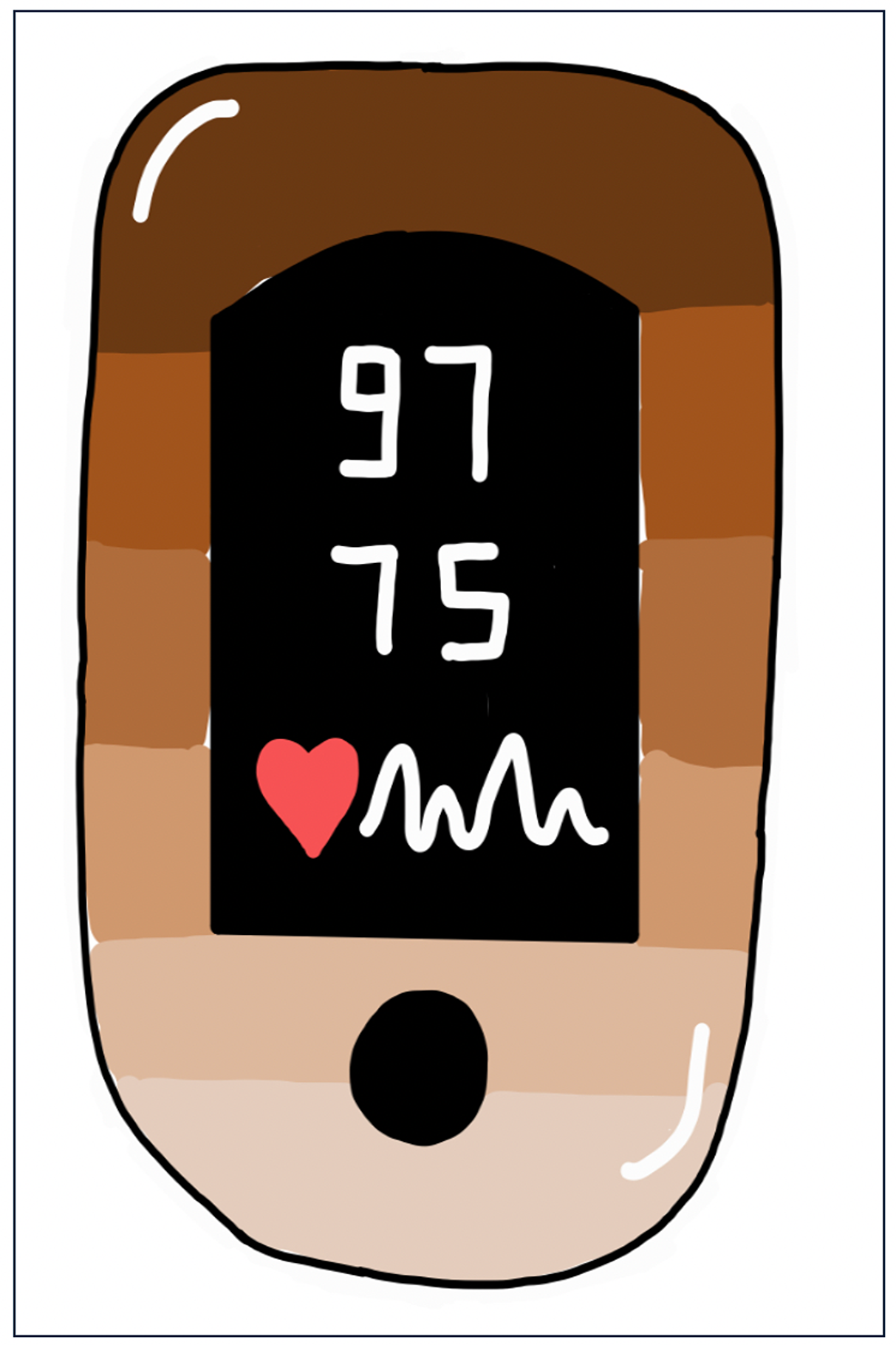Skin Tone Calibration of Pulse Oximeter Oxygen Saturation Data
- Program: Biomedical Engineering
- Course: EN.580.480 Precision Care Medicine
Project Description:
Our project aims to enhance the accuracy of pulse oximetry readings across all skin tones to address the critical issue of hidden hypoxemia, particularly prevalent among individuals with darker skin. Our innovative approach uses machine learning to estimate oxygen saturation estimation (SaO2) from standard SpO2 readings by integrating additional patient health data and a race-dependent quantification of skin tone. We hope to detect hypoxemia more accurately, reduce racial disparities in healthcare, and improve overall patient outcomes. This initiative is backed by studies showing that existing SpO2 readings often fail to reveal low oxygen levels in darker-skinned patients, leading to potentially severe undiagnosed conditions. Our approach is to ensure that pulse oximetry—a vital tool in medical diagnostics—is reliable and equitable for all patients.
Project Poster
 Open full size poster in new tab (PDF)
Open full size poster in new tab (PDF)
Project Post Summary:
Low oxygen levels cause nearly half a million deaths each year in the US. Arterial oxygen saturation (SaO2) is the most accurate method to measure oxygen levels directly from the blood. However, pulse oximetry (SpO2), a more common method, may be less precise, especially for those with darker skin, as melanin can interfere with its accuracy. Despite known issues with SpO2 accuracy in darker-skinned individuals, current methods struggle to predict oxygen saturation for these patients, leading to healthcare disparities. Pulse oximetry readings (SpO2) are vital in healthcare, typically ranging from 95% to 100%. Values below 88% signal urgent hypoxia risks. Studies indicate that black patients are nearly three times more likely to have undetected hypoxemia. There is a clinical need for an algorithm that quantifies skin tone and finds pulse oximeter overestimation bias in relation to skin will give accurate oxygen saturation estimations for equitable clinical care for diverse races. The aims to achieve the clinical need are as follows. Aim 1 is to establish statistical significance of pulse oximeter overestimation compared to the gold standard. Aim 2 is to use computational models to better estimate O2 saturation from physiological/demographic data and classify hidden hypoxemia (HH). Aim 3 is to develop race-independent skin tone quantification for standardization and inclusivity. HH overestimation bias for darker skin tones was validated and clinically relevant features for HH reduction and prediction were identified. Regression models, including Random Forest, XGBoost, and Linear Regression, were utilized to calibrate pulse oximetry for bias and evaluate performance. Future steps include quantifying skin tone using skin quantification and colorimeters for validation and utilizing additional models to compare performance.
Course Faculty
- Joseph L Greenstein
- Casey Overby Taylor
Project Mentors, Sponsors, and Partners
- Danielle Gottlieb-Sen
- Summer Duffy



